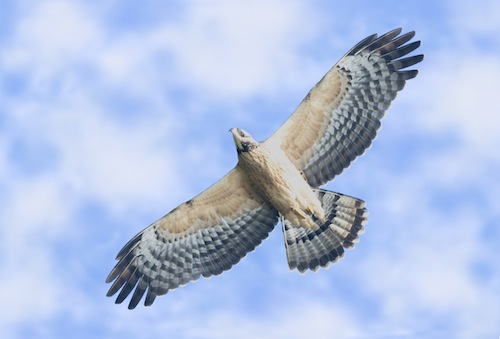Biodiversity
Hachikuma Project: Satellite tracking system of migratory birds
2012.10.19 Yumi Yamada

Report by: Teruo Nakamura
Some birds migrate each season to find food and breeding grounds. It has been difficult in the past for researchers to identify the exact route that they take. But recent technological developments have made it possible to attach lightweight transmitters to track via satellite the dynamic routes by which migratory birds travel.
The "Hachikuma Project," lets you follow migratory birds in real-time. The project members attached small transmitters to a species of hawks known as oriental honey-buzzards, which breeds in Japan during the summer and flies south to pass the winter, enabling people to easily follow them on Google map.
After the launch in September, the oriental honey-buzzards were spotted in Aomori, Japan where they breed, but towards the end of September, they began to fly south. They have already traveled some 700km, over the East China Sea, and they are estimated to reach their winter destination of Indonesia by mid to end of November. It is said that the buzzards take a different route when they fly back up north, so it will be interesting to see where exactly they fly.
"I want people from around the world to develop a deeper understanding for the migration of birds and nature's mechanism," says the project manager, Specially-appointed professor Hiroyoshi Higuchi of the Keio University. "The birds will likely face many hardships on their journey like the disappearance of their migration destinations, bad weather, poaching, and environmental pollution. I hope the buzzards will be able to continue to travel safely."
Birds decide which route to take and when to travel without relying on the weather forecast or maps. So it is really amazing how the oriental honey-buzzards find their way home every year.
Related URL/media
![]()









